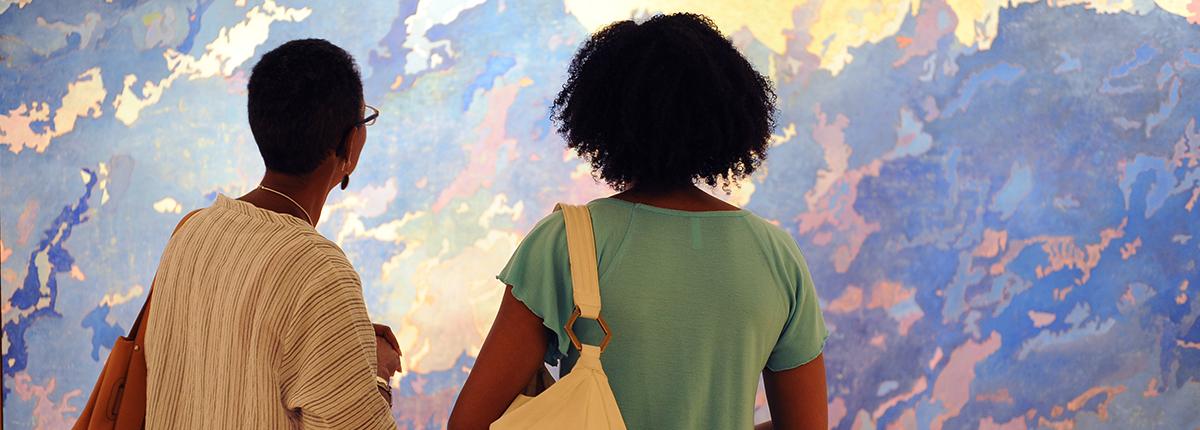Among the art styles of the United States, there are various genres. Some of these styles are: American realism, Cubism, and Futurism. This article will examine each style and discuss the role of European culture in the development of these works of art.
Cubism
During the early twentieth century, American Cubism flourished. The style was visually insouciant and technically accomplished. It was largely criticized as derivative and provincial.
American Cubism started around 1907, when Picasso and Braque began working together. They both sought to break down the traditional ways of viewing art, and to represent multiple perspectives on one canvas. They used flat geometric shapes to suggest three-dimensional qualities.
The style grew in popularity, and by the end of World War I, its influence was felt throughout the artistic world. It became the basis for Abstract Expressionism. It also influenced photography, music, literature, and scenic design.
The first major patron of Cubism was Gertrude Stein. Her writing included repetitive phrases, such as “I’ll see a blackbird and a bird.” She used a changing point of view in her works.
Cubists believed that there was no one way to represent reality. They wanted to show multiple points of view at the same time, so that the viewer could see the whole picture.
Futurism
During the early twentieth century, Italian Futurism was a significant influence on American art. This was a style of painting that emphasized speed, technology, and the machine age. It incorporated urban landscapes, airplanes, automobiles, and industrial cities. However, these were not utopian visions. Instead, they were linked to a dream of movement that never stops.
Many of the Futurists were passionate nationalists, and they admired violence. Some joined the army as volunteers. They studied war and violence in all its forms, and the results were evident in their art. Some were even persecuted or left their country.
A significant influence on American Futurism was the work of Joseph Stella. He was born in Italy, but lived in New York for most of his life. He was associated with Alfred Stieglitz, Walter Arensberg, and Albert Gleizes. His painting Battle of Lights, Coney Island, Mardi Gras (1913-14) is considered to be part of the Futurist canon.
Other influential Futurists were Luigi Russolo and F.T. Marinetti. The first Futurist concert was given by the two artists in 1914. They wrote The Art of Noises, an influential text on musical aesthetics.
American realism
During the early 20th century, American realism in art was a major trend. It is a style of art that depicts everyday life and social events. The artworks are highly realistic and subvert conventional standards. This style of art was especially influential in literature and music.
The emergence of American realism in artwork was largely inspired by the concerns of urban populations. It drew inspiration from the poorest neighborhoods in New York City. Several artists were involved in the worst-affected communities and portrayed people’s daily lives.
The first major unified American art movement was the Hudson River School, which included Albert Bierstadt, Frederic Edwin Church, Asher B. Durand, John Frederick Kensett, and many others. They were attracted to the majesty of the United States and the sublime power of nature.
The Harlem Renaissance was another movement that emphasized a collective commitment to African-American history and culture. Artists such as Jacob Lawrence drew inspiration from the African-American creative community of Harlem. The paintings and sculptures of Lawrence feature detailed figuration and signage. He also brought a greater sense of spirituality to his work.
Influences of European culture on American art
During the colonial period, American artwork was heavily influenced by European traditions. European prints were used to shape architecture, liturgical objects, and ornamental reliefs. During the late nineteenth century, Native American artists began to incorporate these techniques into their works.
In the early twentieth century, a number of artists began to take inspiration from European avant-garde movements. This led to a number of homegrown artistic styles, including the Hudson River School of painting. This movement emphasized the sublime beauty of the American landscape.
The Harlem Renaissance movement was another important artistic movement of the early twentieth century. This movement rejected the more abstract, European-influenced avant-garde movements and focused on the African American community. It was founded by a group of artists from the Harlem community, including Aaron Douglas, Philip Evergood, Jacob Lawrence, and Antonio Berni.
Social Realism was another art movement that was largely influenced by the rise of fascism in the 1930s. This movement aimed to depict the struggles of the working class and the urban environment. This movement was inspired by the murals of Jose Clemente Orozco. It was also influenced by the work of the John Reed Society and the labor rights movement.





